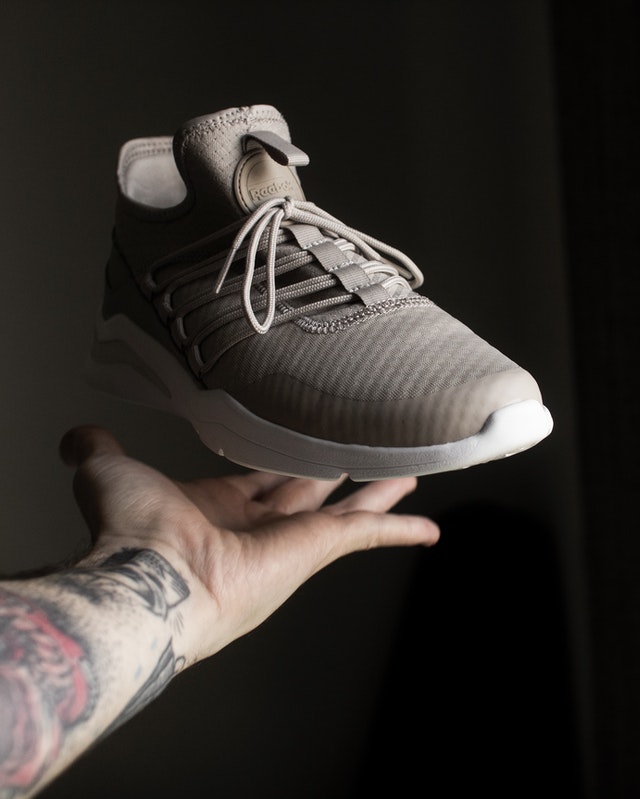I talk a lot about what good foot function is and how our shoes affect our feet. I’m also a huge proponent of minimalist footwear as I’ve replaced my entire previous shoe selection with minimalist options now. They are a big transition too. I realize now that I jumped in quickly to that world and I’m still slowly adapting to the new footwear.
So what do you do if you want to eventually be operating barefoot or at least in minimalist footwear but you’re not there yet?
Maybe the leap looks too big right now because you have foot pain or a previous injury that is still tender. Even older age will dictate a slower transition; the longer you’ve had your feet in damaging footwear, the more casted they are to fit that rigid style of shoes.
Let’s take a look at what you can do right now to improve your foot function and ease any pain, before you spend a lot of time barefoot or in minimalist shoes.
Remove the Shoe Liner
This is the thin insole that sits right under your foot inside the shoe. It should slip out pretty easily.
This liner usually has a slight arch support to it which if you’re trying to get stronger, you will not want. Arch supports are casts. They may stabilize your foot today, but they are teaching your foot and ankle to get weaker with time.
The shoe liner is also just an extra source of padding. In a traditional pair of shoes, you will not need them. The sole of any regular shoe is already thick and sturdy enough to keep you from feeling most of the surfaces you step on.
Also, cushion has a tendency to teach us to heel-strike our feet. It makes us feel safe landing heel-first because there’s so much protection we won’t feel pain. This teaches terrible walking gait though; we should be opting for a midfoot or forefoot style landing.
Removing this liner will also give a bit more space inside the shoe so the muscles of your feet can engage more.
Loosen Your Laces Strategically
This one is mainly for your toe function, a crucial element of foot function. After you slip on your shoes, I want you to loosen the laces as much as you can near the toe box. You should notice the shoe “expand” as you do this because the laces were holding that area tightly together.
This will give your toes slightly more room to operate and will also reduce your chances of getting bunions from the pressure on either side of the shoe. The only place you need to tighten your shoelaces is at the top of the foot. I would still recommend not doing them too tight.
Our feet don’t need to be as airtight secure in there as we once thought. It’s better to allow all the muscles to engage properly and get blood flow in and out of the foot. Loosening your shoelaces should give you a noticeable relief from the restriction you once felt, especially in shoes that are more narrow.
No Socks
Socks are kind of like the accomplice to the crime who got away with it. Shoes take all the heat for damaging our feet but socks are not much better. The elastic material pulls our toes in too close together and won’t allow them to spread out like they should.
Socks also cause slipping inside the shoe, a very under-discussed point. Your feet want as much traction as they can get. But they can’t grasp anything when they’re covered by a smooth sock that is sitting on a smooth shoe sole. This creates a lack of control for the foot and an increase in slipping and running the foot into the walls of the shoe repeatedly.
Removing your socks will again, create some more room inside the shoe. The more room there is for the foot, the better toe and muscle function there will be.
Wear Bigger Sizes
If you have the option, try wearing a half to one size bigger of a shoe. This is something I’ll do with my boots and with a pair of my athletic shoes. By doing this, I get a bigger toe box to work with and a shoe that’s slightly wider overall so the sides of my feet aren’t pressed against the walls.
A bigger shoe also keeps the ends of my toes from pressing against the end of the shoe. I’ve talked about this in a previous article and it’s something to be careful of because it can cause mallet toes and bent toes.
These are just a few simple recommendations that I use with my shoes. I have found them all to be useful tricks and I will use them accordingly for the specific purpose I want.
If you have tried these already and feel like your feet are ready to get even stronger and more capable, check out How to Transition to Minimalist Footwear. You’ll learn how to prepare yourself for the ultimate footwear and give your feet the robust health they crave.


Leave a Reply